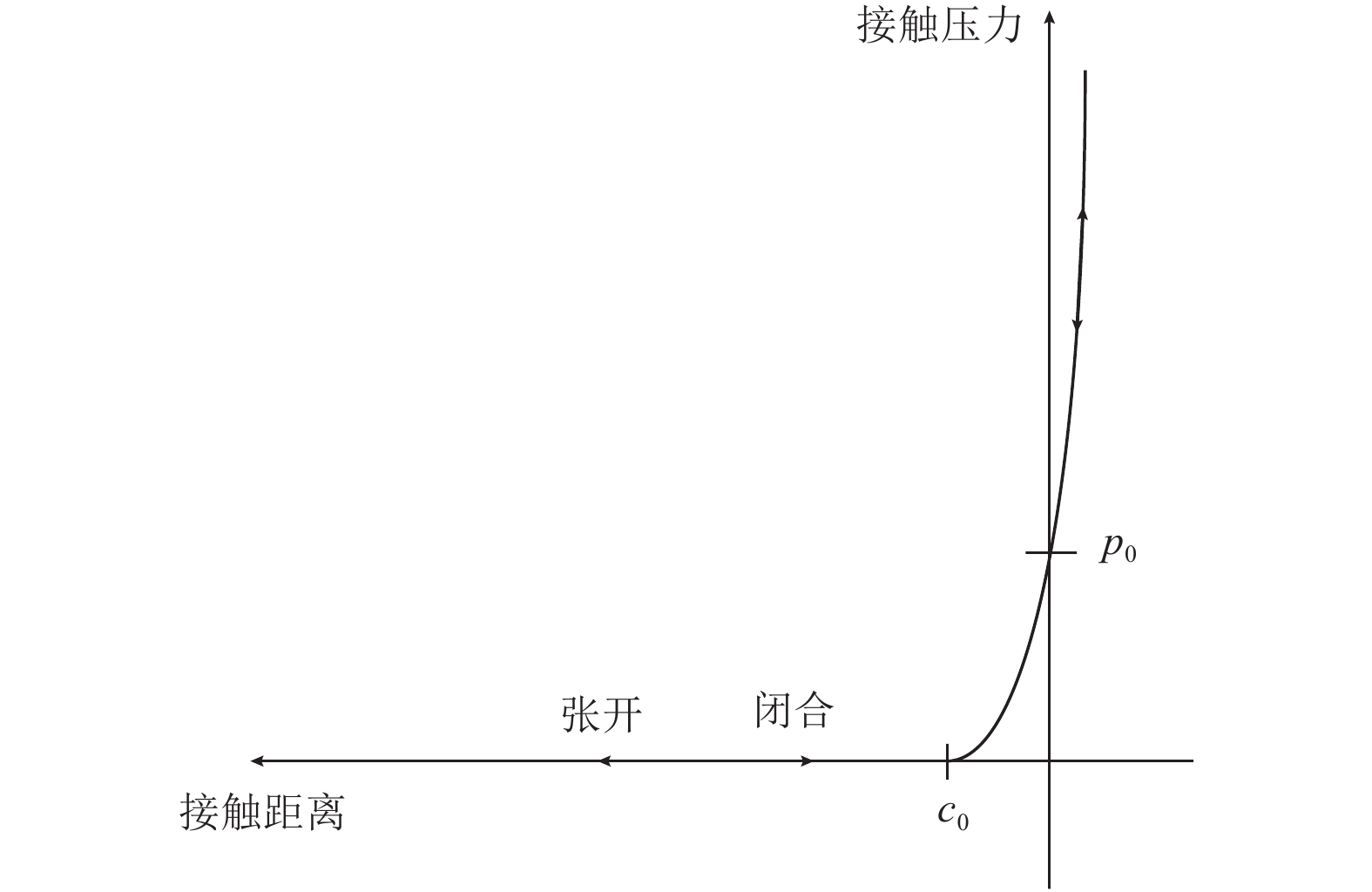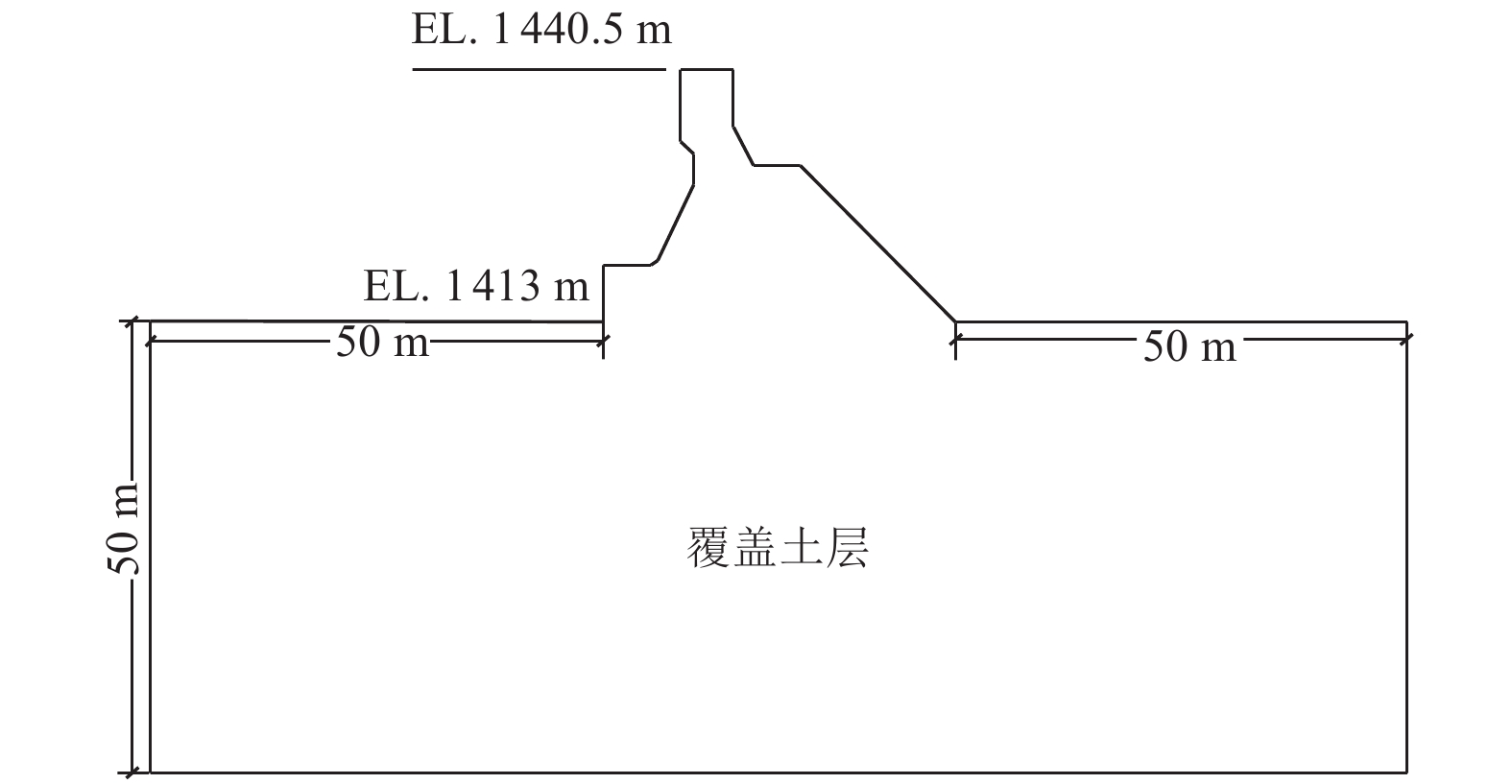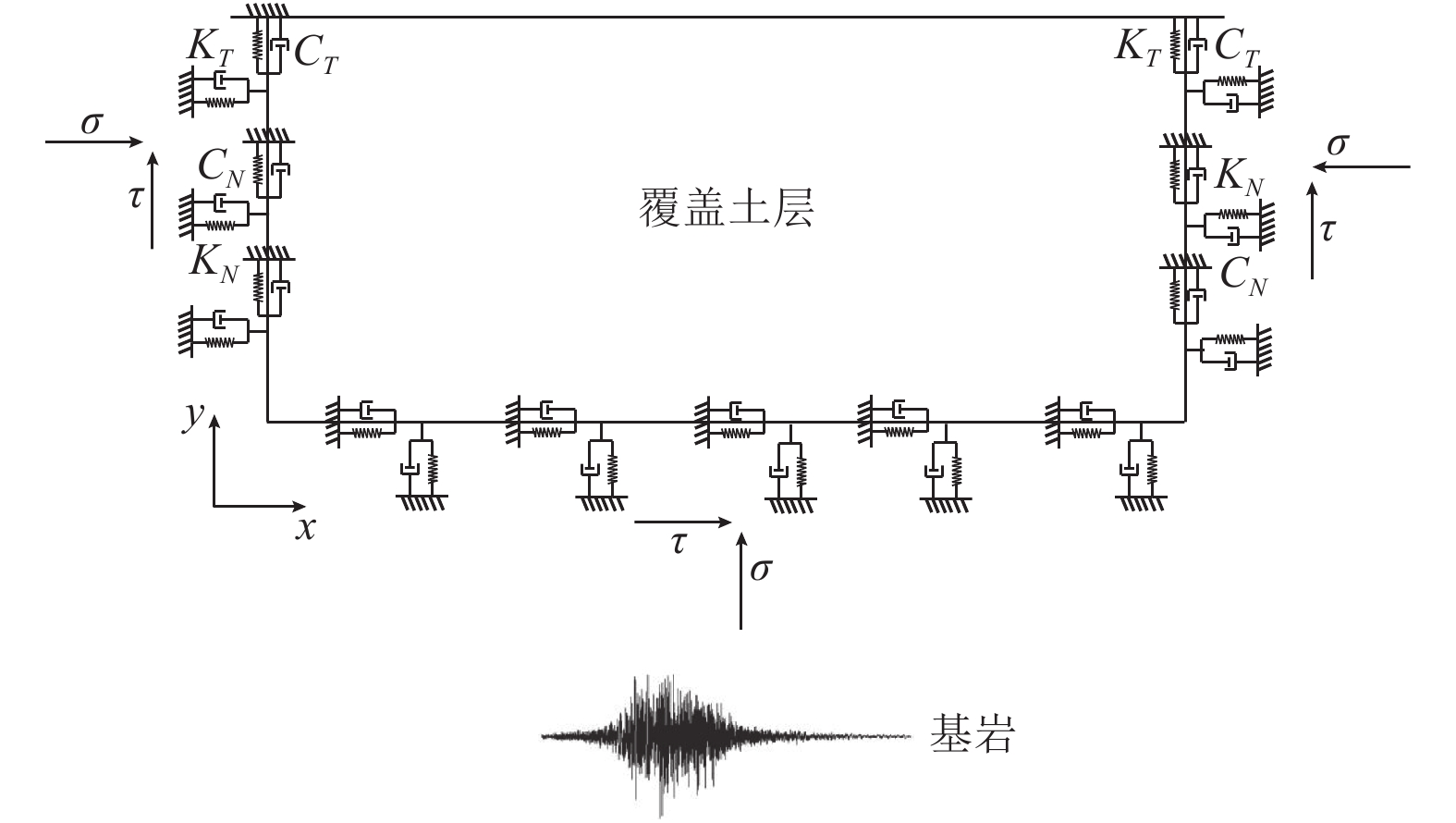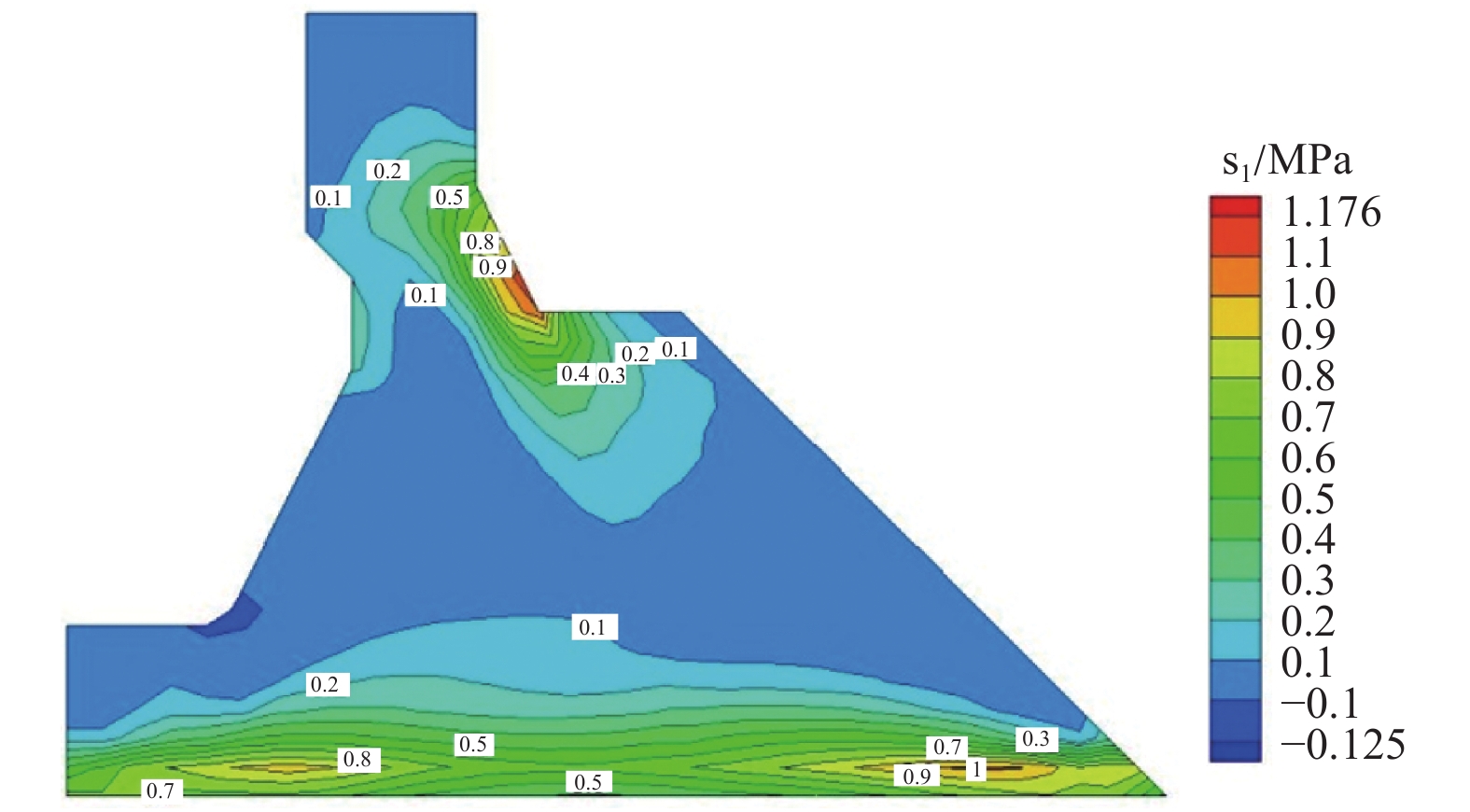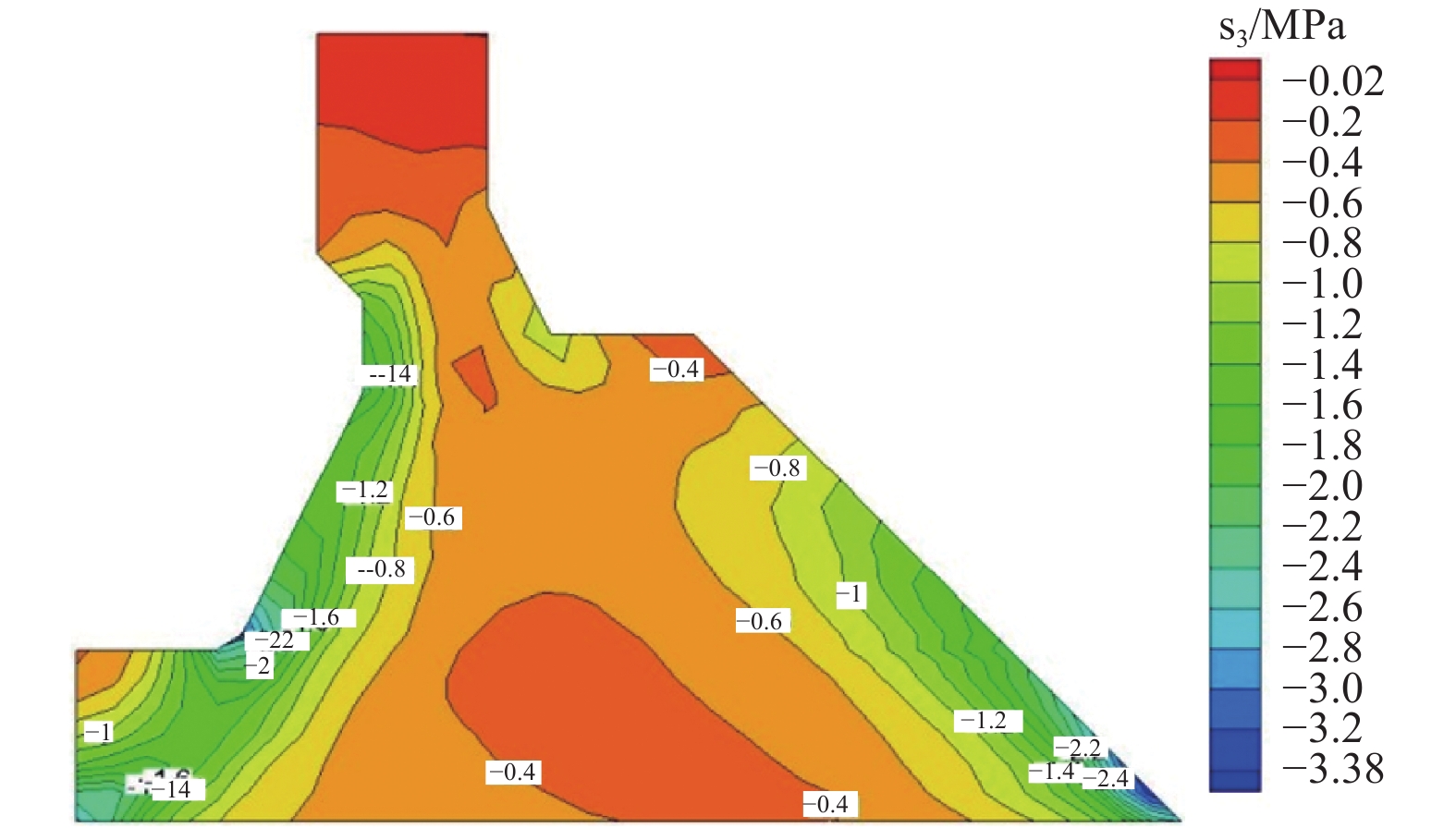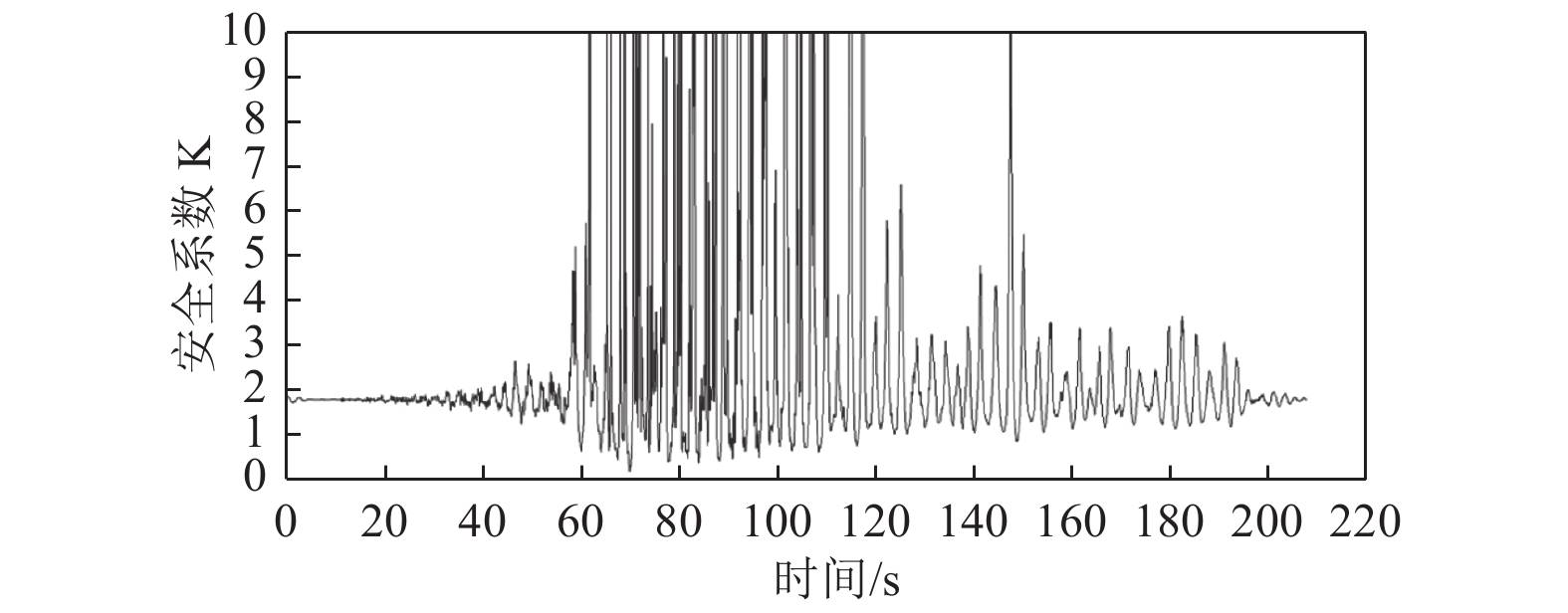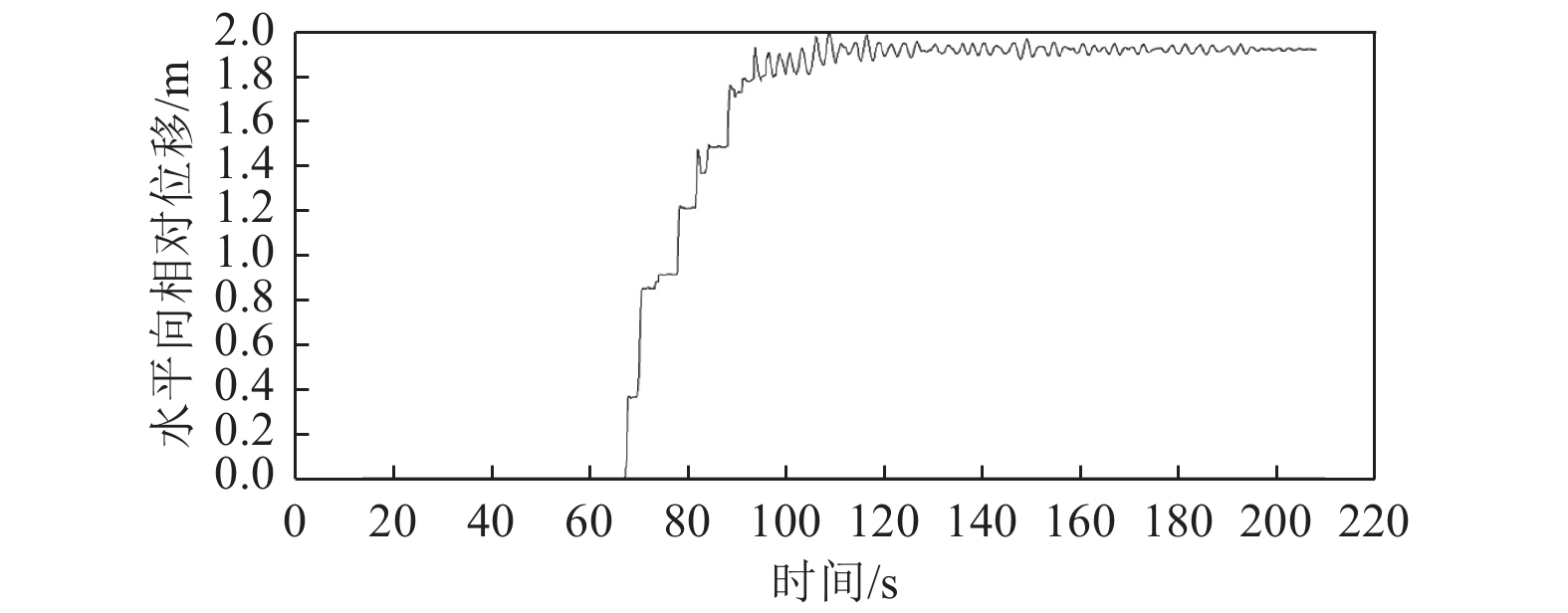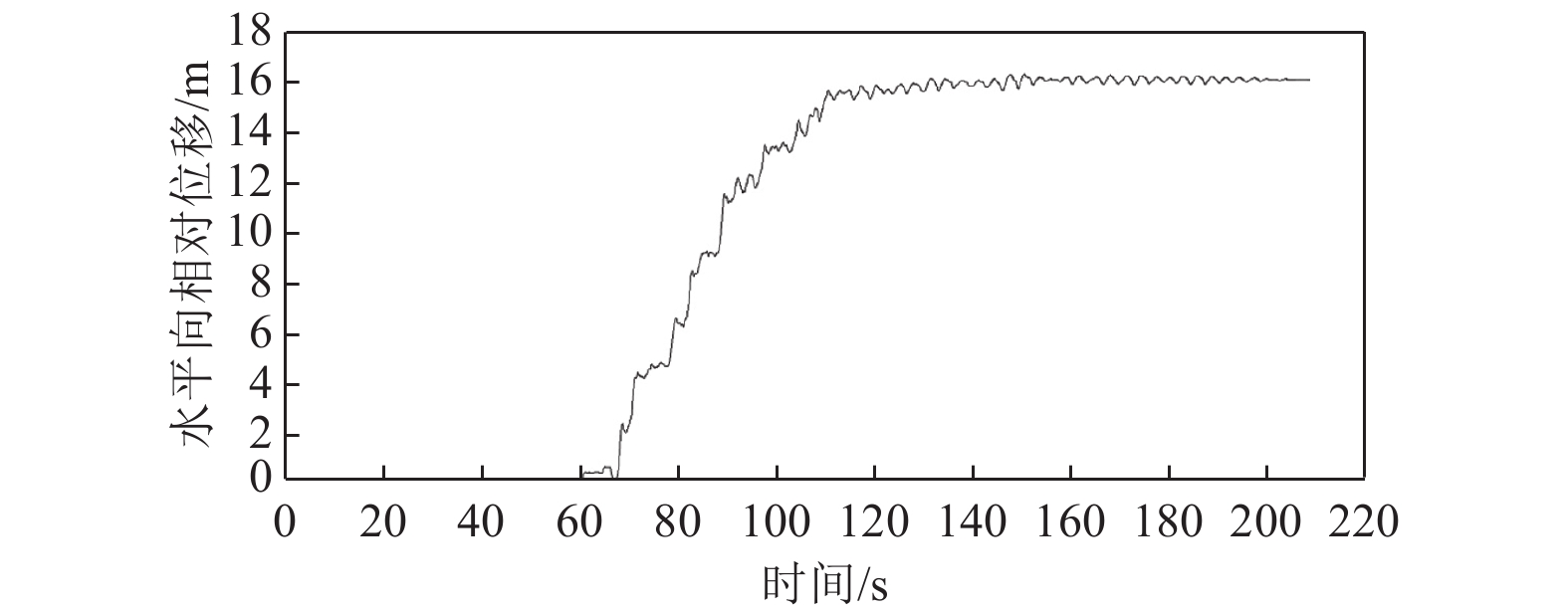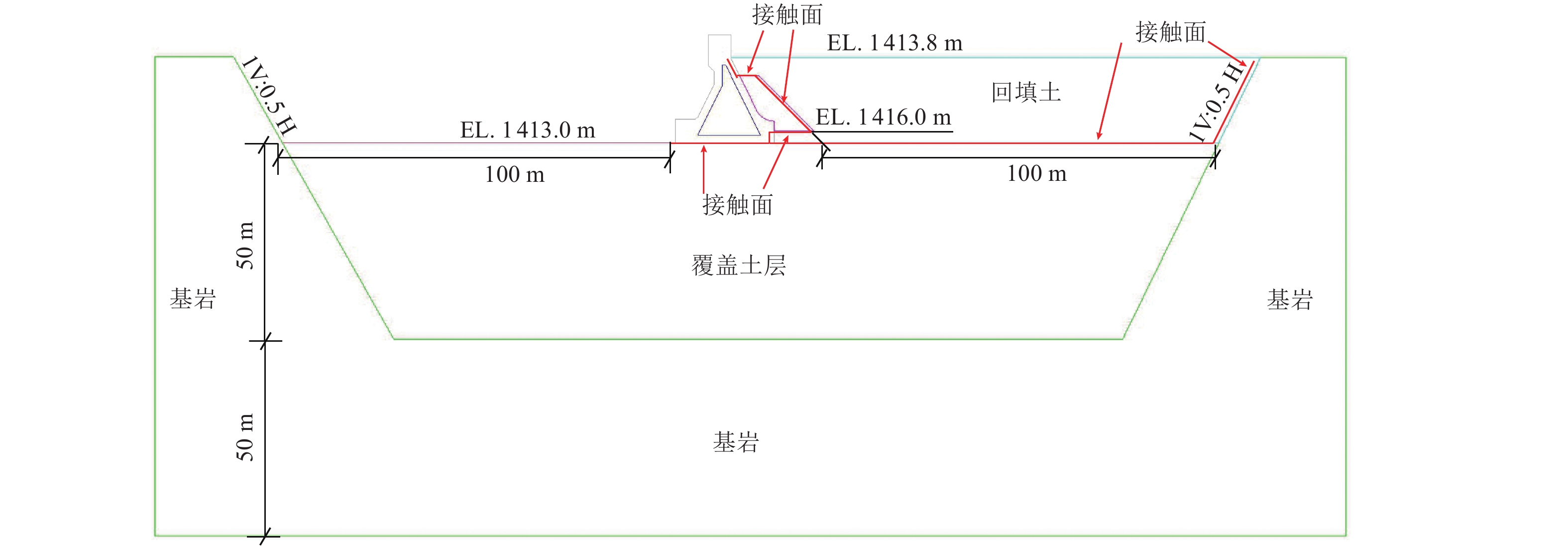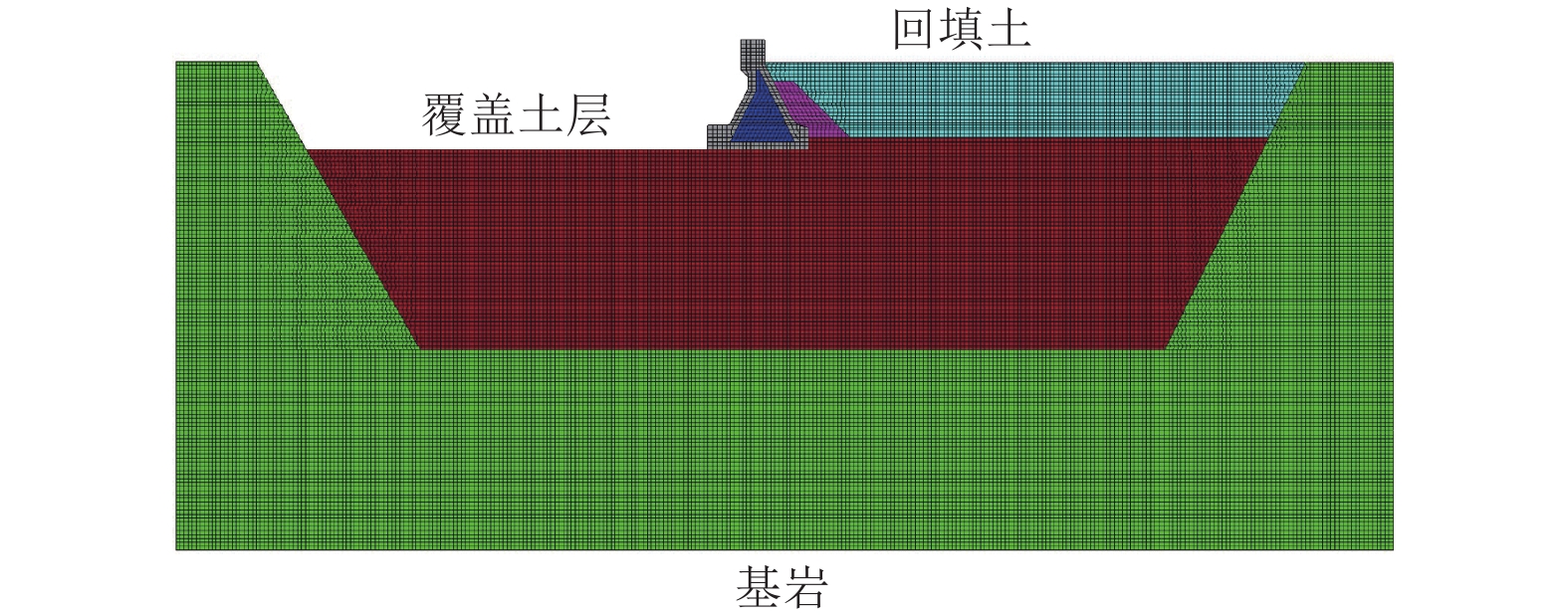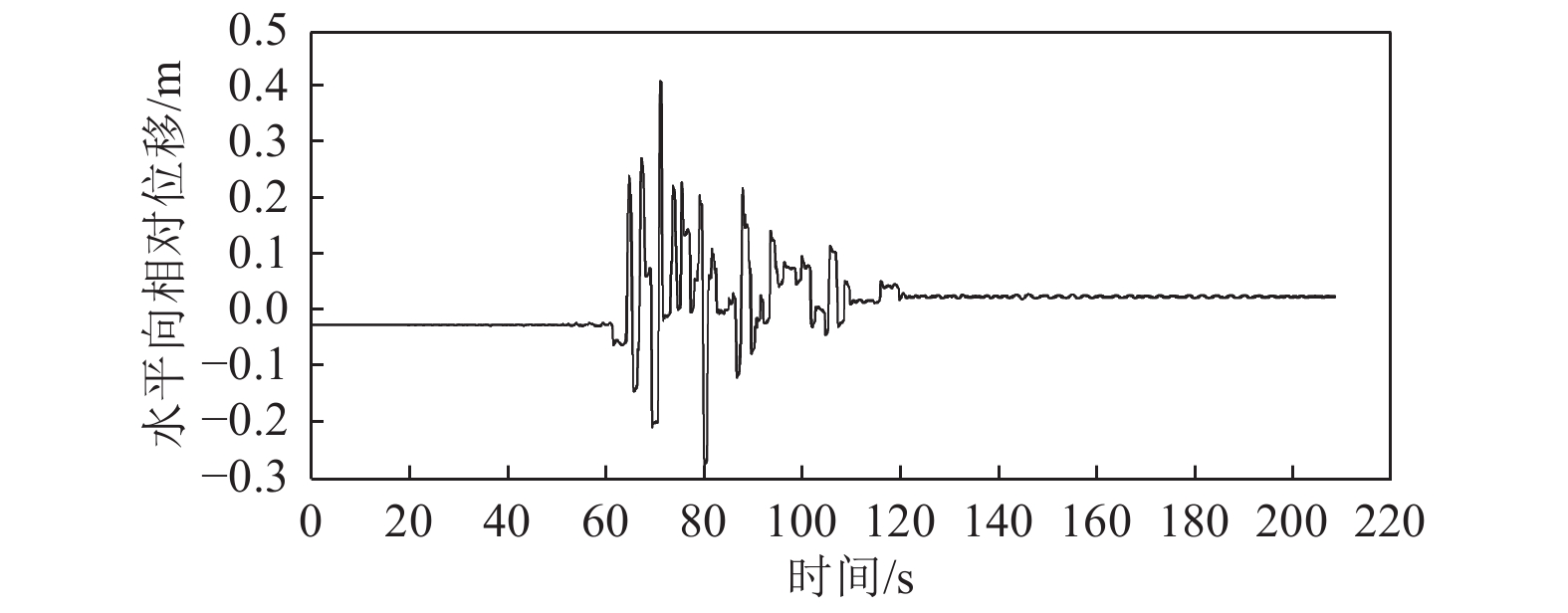Seismic Safety Evaluation of a Gravity Dam in Deep Overburden Site Under Super Strong Earthquakes
-
摘要: 本文通过成层状地基地震动输入计算方法得到覆盖层边界自由场运动,采用粘弹性边界,考虑地基辐射阻尼效应及坝体和地基的接触非线性,针对强震区深厚覆盖层场地重力坝开展线性和非线性动力时程分析研究,结合需求能力比DCR评估其抗震性能。由线弹性动力时程分析可知,在运行基准地震OBE作用下,重力坝坝体应力均在允许范围内,其抗滑稳定安全系数不能满足要求;由非线性动力分析可知,在OBE和最大设计地震MDE作用下,重力坝发生较大滑动位移。通过在重力坝坝体下游坝后回填土加强重力坝抗震稳定性,结果表明,下游坝后回填土可有效减小坝体滑动位移,加强其抗震稳定性。本文针对深厚覆盖层场地重力坝开展的抗震安全研究为抗震设计提供了科学依据,为强震区深厚覆盖层场地重力坝的抗震分析提供参考。
-
关键词:
- 重力坝 /
- 覆盖层场地 /
- 地基辐射阻尼效用 /
- DCR /
- 线性和非线性动力时程
Abstract: Based on the method for calculating the seismic input of a layered foundation, the free field motion is obtained. The viscoelastic boundary is adopted to consider the radiation damping effect and the contact nonlinearity between dam and foundation is considered. The linear and nonlinear dynamic time history analysis of a gravity dam in strong earthquake area is carried out, and its seismic performance is evaluated based on demand capacity ratio. The linear elastic dynamic time history analysis shows that the stress of gravity dam body is within the allowable range under OBE, while its seismic stability safety coefficient cannot meet the requirements; the nonlinear dynamic analysis shows that under OBE and MDE, the gravity dam appears obvious sliding. Furthermore, the backfill behind the gravity dam downstream is considered to enhance the seismic stability of the gravity dam. The results show that the backfill behind the downstream dam can effectively reduce the sliding, and enhance its seismic stability. In this paper, the research on seismic safety of the gravity dam under overburden site provides a scientific basis for its seismic design, and also provides a reference for seismic analysis of gravity dams under overburden sites in strong earthquake area.-
Key words:
- Gravity dam /
- Overburden /
- Radiation damping effect /
- DCR /
- Linear and nonlinear dynamic time history
-
表 1 混凝土及地基材料参数
Table 1. Material parameters of concrete and foundation
材料 容重γ/kN·m−3 剪切
模量G/MPa泊松比$ \mu $ 弹性模量E/MPa 摩擦角φ/° 容许承载力/kPa 抗压/抗拉强度/MPa 砼C20 24.0 12000 0.167 28000 - 12500 20/2.40 毛石砼
C1224.0 9500 0.167 22000 - 7500 12/1.71 覆盖层 19.0 - 0.200 25 32.5 400 - 岩石 26.5 1800 0.275 4500 - - - 表 2 各类接触面参数
Table 2. Parameters of contact surfaces
接触面 粘聚力c/kPa 摩擦角φ/° 砼-砼 0 45.0 砼-毛石砼 0 40.0 砼-覆盖层 0 28.8 毛石砼-覆盖层 0 28.8 -
[1] 杜修力, 袁雪纯, 黄景琦, 等, 2017. 典型土层场地随机地震反应规律分析. 震灾防御技术, 12(3): 574—588 doi: 10.11899/zzfy20170314Du X. L. , Yuan X. C. , Huang J. Q. , et al. , 2017. Analysis of stochastic seismic response in typical soil sites. Technology for Earthquake Disaster Prevention, 12(3): 574—588. (in Chinese) doi: 10.11899/zzfy20170314 [2] 刘晶波, 吕彦东, 1998. 结构-地基动力相互作用问题分析的一种直接方法. 土木工程学报, 31(3): 55—64Liu J. B. , Lv Y. D. , 1998. A direct method for analysis of dynamic soil-structure interaction. China Civil Engineering Journal, 31(3): 55—64. (in Chinese) [3] 潘坚文, 张楚汉, 徐艳杰, 2010. 强震输入方式与地基模型对重力坝反应的影响. 岩土工程学报, 32(1): 82—88Pan J. W. , Zhang C. H. , Xu Y. J. , 2010. Influence of seismic input mechanism and foundation models on response of gravity dams. Chinese Journal of Geotechnical Engineering, 32(1): 82—88. (in Chinese) [4] 殷琳, 楼梦麟, 康帅, 2019. 水平分层土层系统等效阻尼比的简化计算方法. 震灾防御技术, 14(1): 10—23 doi: 10.11899/zzfy20190102Yin L. , Lou M. L. , Kang S. , 2019. Simplified method for determining equivalent damping ratio of horizontal multi-layered soil stratum. Technology for Earthquake Disaster Prevention, 14(1): 10—23. (in Chinese) doi: 10.11899/zzfy20190102 [5] 郑晓东, 刘云贺, 马静, 2016. 考虑强震持续时间的混凝土重力坝损伤累积研究. 水利水电技术, 47(4): 18—23Zheng X. D. , Liu Y. H. , Ma J. , 2016. Study on accumulated damage of concrete gravity dam under consideration of strong-motion duration. Water Resources and Hydropower Engineering, 47(4): 18—23. (in Chinese) [6] ABAQUS. 2010. ABAQUS 6.10: Analysis User’s Manual. Providence: ABAQUS, Inc. [7] Alembagheri M. , 2016. Earthquake damage estimation of concrete gravity dams using linear analysis and empirical failure criteria[J]. Soil Dynamics and Earthquake Engineering, 90: 327—339. doi: 10.1016/j.soildyn.2016.09.005 [8] Bhattacharjee S. S. , Léger P. , 1993. Seismic cracking and energy dissipation in concrete gravity dams. Earthquake Engineering & Structural Dynamics, 22(11): 991—1007. [9] Cervera M. , Oliver J. , Faria R. , 1995. Seismic evaluation of concrete dams via continuum damage models. Earthquake Engineering & Structural Dynamics, 24(9): 1225—1245. [10] Chopra A. K. , Wang J. T. , 2010. Earthquake response of arch dams to spatially varying ground motion. Earthquake Engineering & Structural Dynamics, 39(8): 887—906. [11] Chopra A. K. , 2012. Earthquake analysis of arch dams: factors to be considered. Journal of Structural Engineering, 138(2): 205—214. doi: 10.1061/(ASCE)ST.1943-541X.0000431 [12] Deeks A. J. , Randolph M. F. , 1994. Axisymmetric time-domain transmitting boundaries. Journal of Engineering Mechanics, 120(1): 25—42. doi: 10.1061/(ASCE)0733-9399(1994)120:1(25) [13] El-Aidi B. , Hall J. F. , 1989. Non-linear earthquake response of concrete gravity dams part 1: modelling. Earthquake Engineering & Structural Dynamics, 18(6): 837—851. [14] Fenves G. , Chopra A. K. , 1985. Effects of reservoir bottom absorption and dam-water-foundation rock interaction on frequency response functions for concrete gravity dams. Earthquake Engineering & Structural Dynamics, 13(1): 13—31. [15] Fenves G. L. , Mojtahedi S. , Reimer R. B. , 1992. Effect of contraction joints on earthquake response of an arch dam. Journal of Structural Engineering, 118(4): 1039—1055. doi: 10.1061/(ASCE)0733-9445(1992)118:4(1039) [16] Hall J. F. , Chopra A. K. , 1982. Hydrodynamic effects in the dynamic response of concrete gravity dams. Earthquake Engineering & Structural Dynamics, 10(2): 333—345. [17] Hariri-Ardebili M. A. , Mirzabozorg H. , Ghasemi A. , 2013. Strain-based seismic failure evaluation of coupled dam-reservoir-foundation system. Coupled Systems Mechanics, 2(1): 85—110. doi: 10.12989/csm.2013.2.1.085 [18] Idriss I. M. , Sun J. I. , 1992. User's manual for SHAKE91-A computer program for conducting equivalent linear seismic response analysis of horizontally layered soil deposits. Davis: University of California. [19] Løkke A. , Chopra A. K. , 2018. Direct finite element method for nonlinear earthquake analysis of 3-dimensional semi-unbounded dam-water-foundation rock systems. Earthquake Engineering & Structural Dynamics, 47(5): 1309—1328. [20] Pan J. W. , Zhang C. H. , Xu Y. J. , et al. , 2011. A comparative study of the different procedures for seismic cracking analysis of concrete dams. Soil Dynamics and Earthquake Engineering, 31(11): 1594—1606. doi: 10.1016/j.soildyn.2011.06.011 [21] Tan H. C. , Chopra A. K. , 1996. Dam-foundation rock interaction effects in earthquake response of arch dams. Journal of Structural Engineering, 122(5): 528—538. doi: 10.1061/(ASCE)0733-9445(1996)122:5(528) [22] US Army Corps of Engineers. 1995. EM 1110-2-2200 Gravity dam design. Washington: US Army Corps of Engineers. [23] US Army Corps of Engineers. 2003. EM 1110-2-6051 Time-history dynamic analysis of concrete hydraulic structures. Washington: US Army Corps of Engineers. [24] US Army Corps of Engineers. 2005. EM 1110-2-2100 Stability analysis of concrete structures. Washington: US Army Corps of Engineers. [25] US Army Corps of Engineers. 2007. EM 1110-2-6053 Earthquake design and evaluation of concrete hydraulic structures. Washington: US Army Corps of Engineers. [26] Zhang C. H. , Pan J. W. , Wang J. T. , 2009. Influence of seismic input mechanisms and radiation damping on arch dam response. Soil Dynamics and Earthquake Engineering, 29(9): 1282—1293. doi: 10.1016/j.soildyn.2009.03.003 -



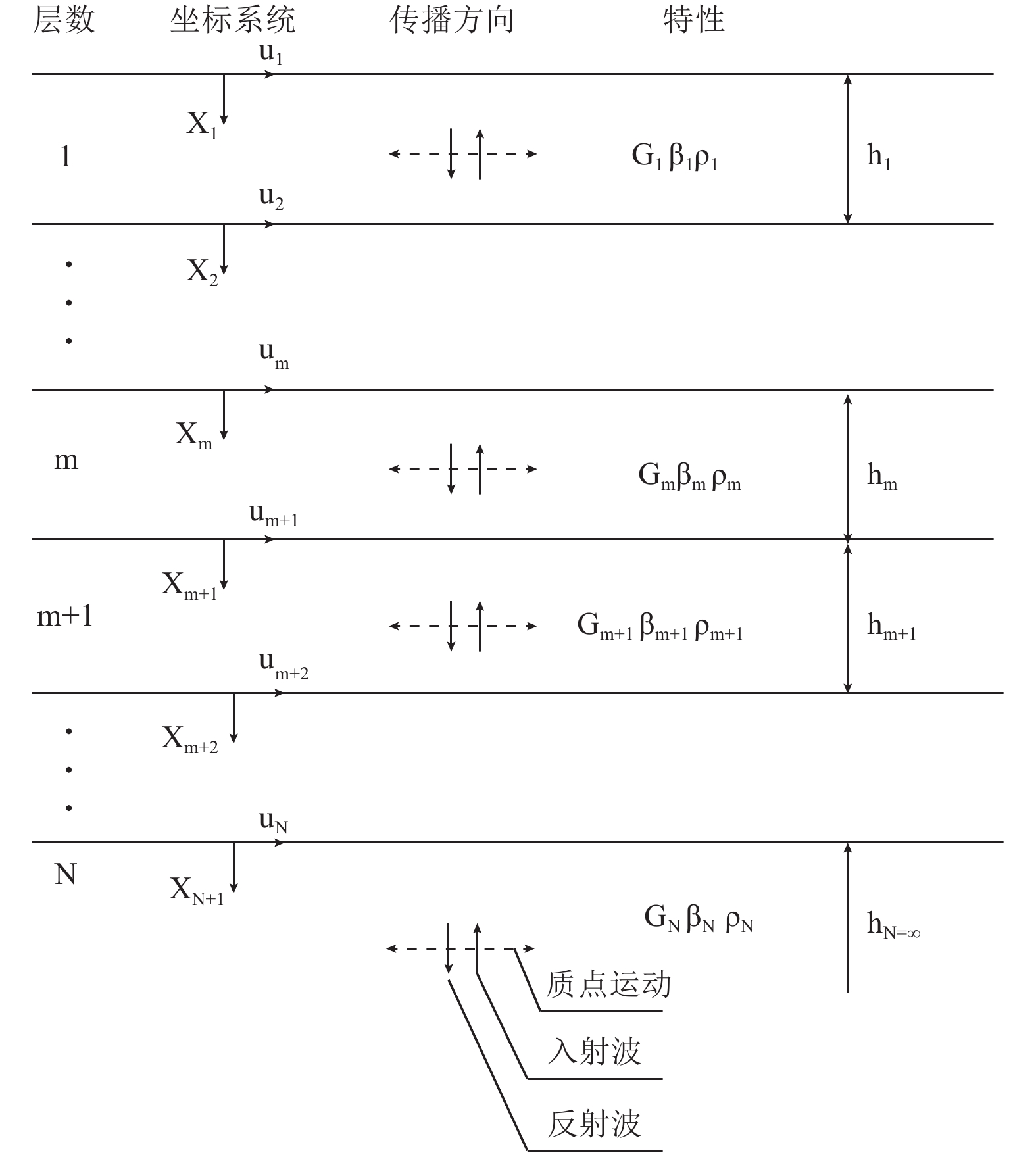
 下载:
下载:
